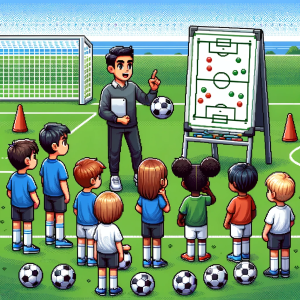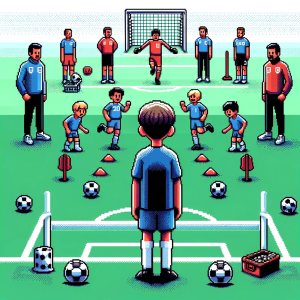
Unlocking Elite Futsal Performance: A Deep Dive into Effective Time and Player Involvement
In the realm of sports science, understanding and optimizing player performance has always been a top priority. The recent study, “Interpreting match performance in elite futsal: considerations for normalizing variables using effective time,” published in the Frontiers in Sports and Active Living, brings us closer to this goal by shedding light on how elite futsal players’ performance can be better understood and improved through a novel approach to data analysis.
Understanding the Study’s Core
The study collected data from 13 National Team futsal players over 15 official matches. The authors aimed to differentiate players based on their “high-involvement” and “low-involvement” during the game, measured through variables like session rate of perceived exertion (sRPE) and player load (PL). By doing so, they could analyze the absolute and relative values of technical-tactical actions and internal and external load variables.
The Significance of ‘Effective Time’
One of the study’s groundbreaking aspects was its focus on “effective time” – when the ball is in play. This approach is critical in sports like futsal, where the clock stops frequently, and players may spend different amounts of time actively involved in play. The results revealed that when performance variables are normalized using effective time, players with less playing time (LOW) could exhibit similar or even higher performance levels than their more involved counterparts (HIGH).
Implications for Coaching and Player Development
The study’s findings are vital for coaches and sports practitioners:
- Customized Training: Coaches can use effective time to individualize training and match loads, ensuring players are trained and competed according to their actual playing time.
- Player Assessment: Understanding a player’s performance relative to their effective playing time allows coaches to make more informed decisions about player rotations, game strategy, and individual development.
- Maximizing Potential: Recognizing that lower involvement players can perform equally or more efficiently in their effective playing time encourages a strategic approach to player rotation and utilization.
Embracing a New Perspective
This research invites coaches, players, and sports scientists to embrace a shift in evaluating and understanding player performance. It encourages a move from traditional total counts and averages to a more nuanced understanding based on effective playing time. This approach is more accurate and allows for a deeper understanding of each player’s contribution and potential.
Conclusion
The study “Interpreting match performance in elite futsal: considerations for normalizing variables using effective time” is a testament to the evolving nature of sports science and its application in enhancing player performance. By incorporating these insights into coaching and training, soccer and futsal enthusiasts can optimize player development and team performance. Dive into the full study here and start transforming your approach to player performance today!
Are you ready to delve deeper into the science and strategy of soccer?
This Week in Soccer offers you a unique blend of expert analysis, engaging infographics, and practical insights. Subscribe to our newsletter and stay ahead of the game with the latest in soccer analytics and coaching strategies. Make the move from spectator to strategist. Subscribe now!



